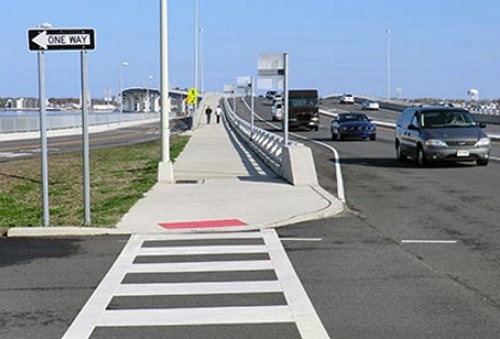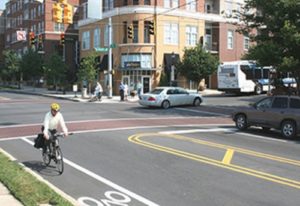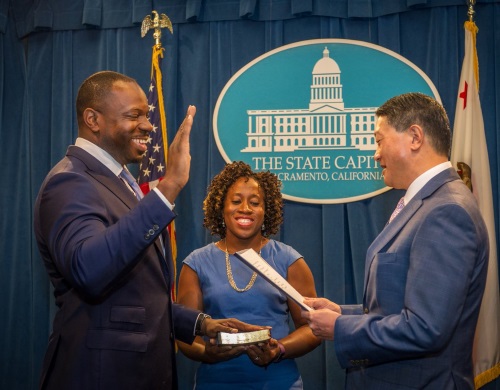A roundup of headlines curated for state transportation environmental professionals
FEDERAL ACTION
CR Secures Federal Funding, Extends FAST Act for One Year – AASHTO Journal
FHWA Issuing $574M in Emergency Funds For a Variety of Disasters – AASHTO Journal
Water case offers a window into Barrett’s jurisprudence – E&E News
New Bill Aims to Make Communities and Infrastructure More Flood-Ready – Pew
DOT’s Transportation Self-Governance Program for Tribes Takes Effect – Transport Topics
Supreme Court to Hear Energy Companies’ Appeal in City Climate Change Lawsuit – Route Fifty
Infrastructure investment is the best idea that never happens: Could 2021 be different? – Roll Call (Opinion)
COVID-19
Study: No Direct Correlation Between COVID-19, Transit System Use – AASHTO Journal
Public Transportation COVID-19 Research Demonstration Grant Program – FTA
Gas Tax Spikes in N.J. Because of Pandemic’s Impact – New York Times
How COVID-19 repurposed city streets – Marketplace
INFRASTRUCTURE RESILIENCE AND SUSTAINABILITY
FAA funds to aid airport safety, infrastructure – Transportation Today
Indiana Seeking to ‘Future-Proof’ Infrastructure Investments – Inside INdiana Business
Public transit agencies can skip long environmental reviews under bill signed by Newsom – San Francisco Chronicle
Montana Selling Bonds As Part Of Infrastructure Funding Package – Montana Public Radio
Paradise Is Going Underwater. What Can We do? – Honolulu Civil Beat (Opinion)
Rising Waters Threaten Great Lakes Communities – Stateline
AIR QUALITY
Pennsylvania Joins 6 States in Commitment to Plan for CO2 Transport Infrastructure – Pennsylvania Governor’s Office (Press release)
ENVIRONMENTAL JUSTICE
How EPA rollbacks evade 1994 environmental justice order – E&E News
Dickinson College to host virtual panel on environmental justice in Pa. – Patriot-News
Yale Experts Explain Environmental Justice – Yale University
Why environmental justice needs to be on the docket in the presidential debates – Union of Concerned Scientists (Blog)
NATURAL RESOURCES
The Environmental Protection Agency and the Texas Commission on Environmental Quality file a lawsuit against the City of Corpus Christi – KIII-TV
Butterflies are free: Illinois Monarch Action Plan takes flight – The Telegraph
Judge to Decide If San Francisco Bay Salt Ponds Are Protected US Waters – Courthouse News Service
Vermont seeks public input on clean water budget priorities by Oct 30 – Vermont Business Magazine
CULTURAL RESOURCES
Historic Preservation Is Great, Except When It Isn’t – Governing (Opinion)
HEALTH AND HUMAN ENVIRONMENT/ACTIVE TRANSPORTATION
Caltrans’ Director Talks Active Transportation – AASHTO ETAP Podcast
The Murky Case for Mass Telecommuting – CityLab
Safer with sharrows? – World Highways
Imagine a statewide network of NC greenway trails. Officials want your ideas. – The News & Observer
Santa Maria releases plan for biking, pedestrian infrastructure, seeks public feedback – Santa Maria Times
U.S. Department of Transportation Designates October as National Pedestrian Safety Month – NHTSA
TRB RESOURCES/ANNOUNCEMENTS
AASHTO Virtual Annual Meeting Registration Now Open – AASHTO Journal
Airport Renewable Energy Projects Inventory and Case Examples – TRB/ACRP (Report)
Transportation Resilience 2019: 2nd International Conference on Resilience to Natural Hazards and Extreme Weather – TRB (Circular)
TR News: Integrating Stormwater Infrastructure into State Department of Transportation Processes – TRB
2020 Virtual Forum on Sustainability and Emerging Transportation Technology (part 1) – TRB
Good to Go? Assessing the Environmental Performance of New Mobility – International Transportation Forum (link to pdf)
Webinar: Telework During COVID and Beyond: Leveraging Behavioral Science to Improve Virtual Work and the Future of Commuting – Eno Center for Transportation
FEDERAL REGISTER NOTICES
Competitive Funding Opportunity: Pilot Program for Transit-Oriented Development Planning – FTA (Notice of Funding Opportunity)
Deprecation of the United States Survey Foot – Department of Commerce (Notice; final determination)




